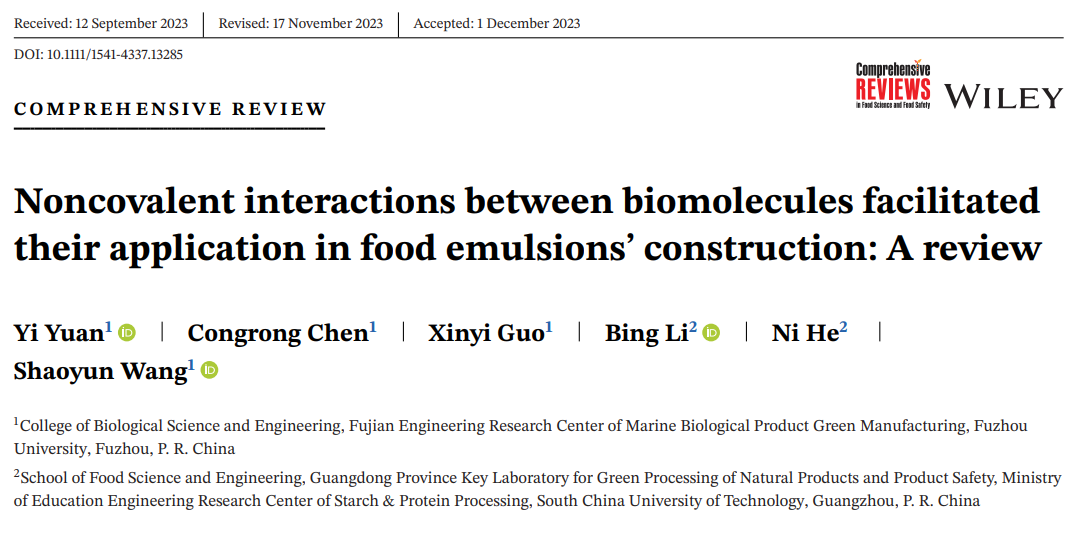
由于生物分子具有无毒、无害、可食用和生物相容性等优点,在食品乳液生产中使用蛋白质、多糖、皂苷和磷脂等生物分子代替合成乳化剂引起了食品科学家的极大兴趣。然而,使用单一生物分子并不总能满足食品乳液应用的实际需求。因此,生物分子通常需要修饰才能获得理想的界面特性。其中,生物分子之间的非共价相互作用代表了一种很有前途的物理修饰方法,可以调节其界面性质,而不会引起与新化学键形成相关的健康风险。静电相互作用、疏水相互作用和氢键是常见的非共价相互作用,可促进生物分子在食品乳液中的有效应用。这些相互作用对生物分子基食品乳液的物理稳定性、氧化稳定性、消化率、递送特性、响应灵敏度和可印刷性产生了积极影响。然而,利用生物分子之间的非共价相互作用来促进它们在食品乳液中的应用仍然存在需要进一步改进的局限性。
福州大学汪少芸教授、袁毅副教授等人在Comprehensive Reviews in Food Science and Food Safety 发表了标题为“Noncovalent interactions between biomolecules facilitated their application in food emulsions’ construction: A review”的文章,综述了常见的生物分子乳化剂、生物分子间非共价相互作用对不同生物分子基乳液构建的促进作用和对乳液性能的积极影响,以及它们在生物分子乳液构建中的局限性和前景。总之,未来食品乳液的设计和开发将越来越依赖于生物分子之间的非共价相互作用。然而,为了充分利用这些相互作用来构建基于生物分子的乳液,还需要投入更多的工作。

专家介绍

1College of Biological Science and Engineering, Fujian Engineering Research Center of Marine Biological Product Green Manufacturing, FuzhouUniversity, Fuzhou, P. R. China
Abstract:
Yuan, Y., Chen, C., Guo,X., Li, B., He, N., & Wang, S. (2024). Noncovalentinteractions between biomolecules facilitated theirapplication in food emulsions’ construction: Areview. Comprehensive Reviews in Food Science andFood Safety, 23, 1–23.
 电话: 010-87293157
电话: 010-87293157
 地址: 北京市丰台区洋桥70号
地址: 北京市丰台区洋桥70号
版权所有 @ 2023 中国食品杂志社 京公网安备11010602060050号 京ICP备14033398号-2

 12279
12279